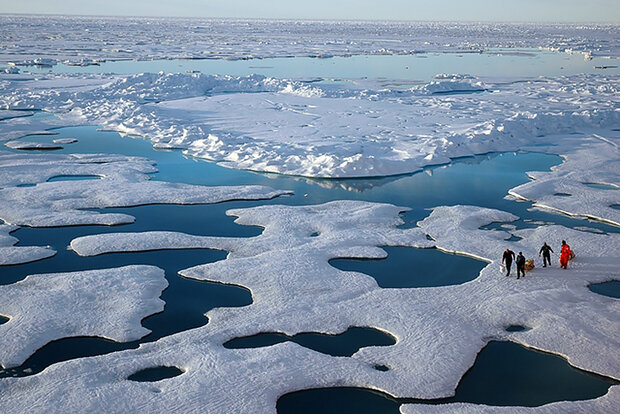Machine learning reveals links between atmospheric pressure patterns and Arctic sea ice melt
Researchers survey sea ice. Credit: Jeremy Potter
As the Arctic Ocean’s sea ice cover continues to decrease, scientists have been working to better understand what drives sea ice loss to improve predictions of seasonal changes in sea ice. A new study supported by CPO’s Climate Variability and Predictability (CVP) program, led by CIRES and the University of Colorado Boulder, uses maps built with machine learning to identify large-scale atmospheric patterns that are linked with the start of seasonal sea ice melt in the Arctic. Knowing what triggers these pressure patterns offers a potential source of seasonal predictability for early melt onset. The study is published in Climate Dynamics.
Early sea ice melt is often triggered by increased radiation associated with increased levels of moisture in the atmosphere. Scientists have already confirmed that the changes in moisture are connected to atmospheric transport from remote areas, rather than transport from the Arctic surface itself. Using self-organizing maps, a type of machine learning, the researchers mapped melt onset dates on to daily sea level pressure from 1979–2018 during melt season (April–July) over the Arctic.
Read more at the link below.
